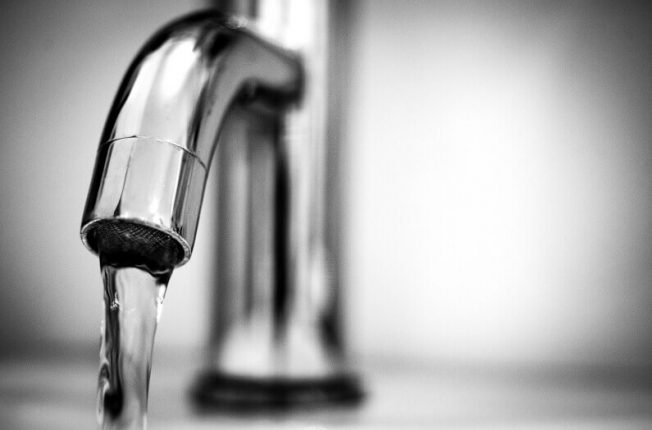
It’s taking an eternity for your faucet to fill a pot with water. Your shower has become the exact opposite of relaxing. There’s no doubt about it at this point: the water pressure in your home is absurdly low.
The question is: why? Why has a once-powerful burst of water turned into little more than a continuous drip? In truth, there are a number of factors that could be affecting the water pressure in your home. Low water pressure is one of the most common plumbing issues that occur.
Looking to learn about some low water pressure causes? Then read on. We’re going to cover 6 of them below.
1. Dysfunctional Fixtures
One of the most common causes of low water pressure is dysfunctional fixtures. Should a faucet or a showerhead or a spigot suffer impairment of some kind, it could very well struggle to deliver water at full pressure.
In some cases, structural impairment is the culprit. In other cases, mineral buildup on the inside of the fixture is the problem. Regardless of which case, repair or replacement will be needed.
It is possible to remove mineral buildup from the inside of a showerhead, for example. That said, unless the cost is substantial, you should probably opt for a full replacement.
As far as spigots and faucets go, they’ll likely require the attention of a seasoned plumber. He or she will be able to identify the source of the problem and then take action to fix it.
2. Damaged Pressure Regulator
The responsibility of the pressure regulator is to stabilize water flow so that it gets neither too low nor too high. Unfortunately, over time, the regulator can suffer wear and tear, becoming damaged and failing to perform its necessary function.
The result? In many cases, low water pressure.
If this is the cause of your low water pressure, there’s only one real fix. That fix is, of course, a pressure regulator replacement.
3. Closed Pressure Valves
Every residential water supply is equipped with two pressure valves. These valves regulate the pressure of the water that is sent either from the city or from the home’s corresponding well.
As such, the levels at which these valves are opened (or closed) will directly affect the pressure of the water that’s allowed to flow through faucets, showerheads, and other fixtures within the home.
If the valve is entirely opened, water will flow at max capacity. If the valve is entirely closed, there will be no water pressure at all. Even if it’s only partially opened or partially closed, the water flow will vary from moderately high to moderately low.
Unfortunately, circumstances can occur in which a pressure valve is tripped incidentally. Should this happen in your home, you could suffer low water pressure.
The fix? Open the valve back up. It’s really as simple as that.
4. Simultaneous Water Usage
Another factor that can lead to reduced water pressure is simultaneous water usage. In other words, if you’re using water in two or more places at one time, you could experience low pressure in both of them.
Note, this does not occur in every home. And in the homes in which it does occur, it usually doesn’t occur unless several water sources are being used simultaneously (think 5 or 6).
In most cases, this is an easy fix: stagger your water usage so that only a couple of sources are drawing water at once. Make note, though, that if the problem is extreme, repairs can be made.
5. Mineral Buildup
Another factor that can lead to reduced water pressure is mineral buildup on the insides of water pipes. This buildup generally occurs in hard water areas where the water is rich in calcium and magnesium. That said, iron-rich water can result in buildup as well.
Unlike many of the other causes on this list, this one creeps up slowly, usually occurring over a span of decades. In most cases, it presents itself as a gradual decrease. If fact, oftentimes, the decrease is so gradual that the homeowner doesn’t even realize it’s happening.
There are chemicals that you can flush through your pipes in order to break down the buildup. Unfortunately, they’re not particularly great for human consumption. As such, if pipe buildup is the culprit, you might have to have your pipes replaced entirely.
Once you’ve installed new pipes, you would be wise to install a water softener as well. This will remove the calcium and magnesium from your water, drastically reducing the risk of excess pipe buildup in the future.
6. Inadequate Source Pressure
While the cause of low water pressure usually lies within the house in which the pressure is low, it doesn’t necessarily have to. There is one external issue that could cause low water pressure in a home. That issue is inadequate source pressure.
Source pressure refers to the pressure at which water is being delivered either by the city or by the home’s adjacent well. Should the well or the city’s pipe system suffer impairment, they could fail to deliver water at the pressure that is desired.
If you get your water from the city, this problem can be solved with a simple telephone call. Inform the city of the problem and they’ll fix it within a reasonable time frame.
If you get your water from a well, you’re going to have to take some form of action. Whether it’s run dry or is suffering mechanical impairment, you’re advised to call up a plumber.
Low Water Pressure Causes High Aggravation: Do Away With it Now
In the best of cases, low water pressure causes frustration and aggravation. As such, if you’re dealing with low water pressure in your home, you should seek to have it fixed as soon as possible.
Looking for someone to fix it in Salt Lake City? Stallion Plumbing and Drains has you covered. Contact us now to schedule an appointment!

